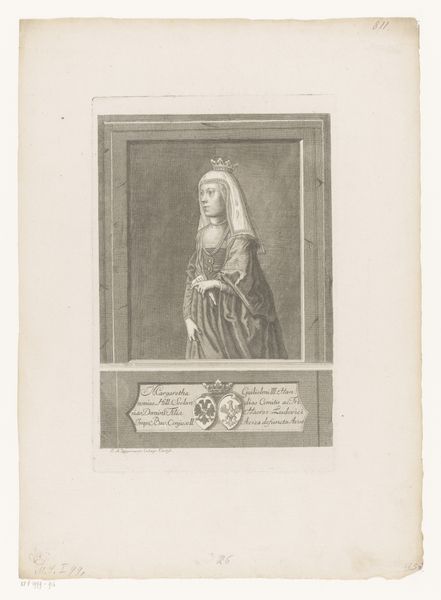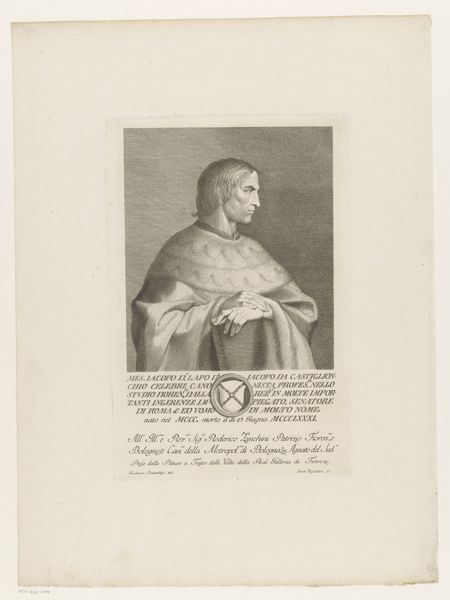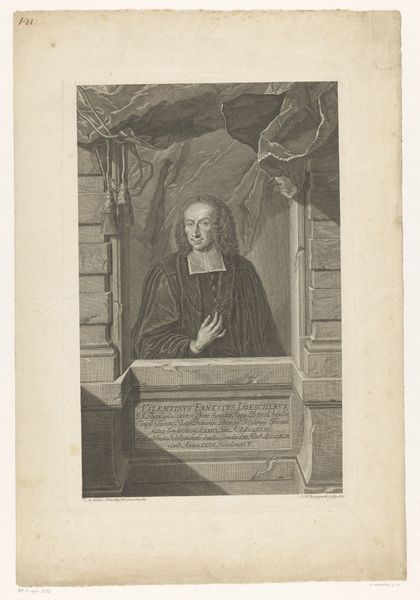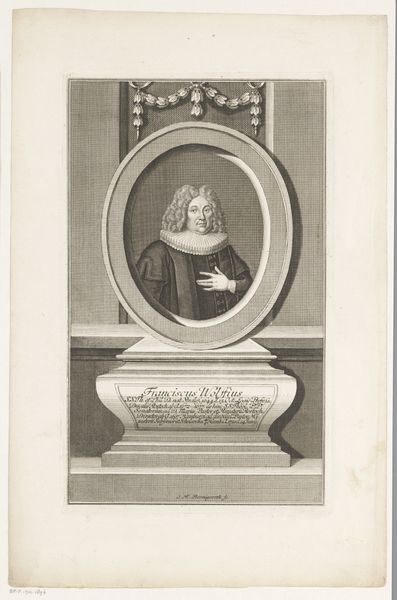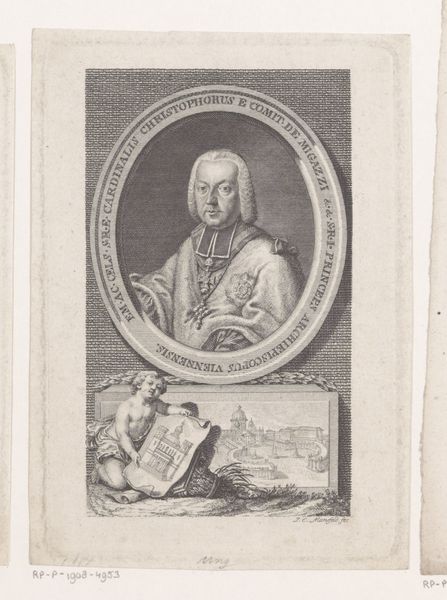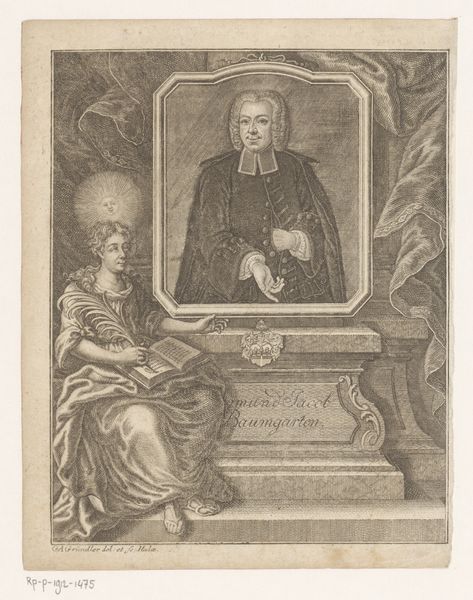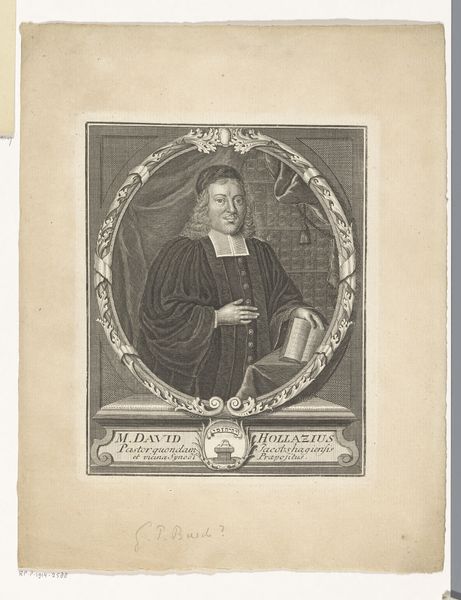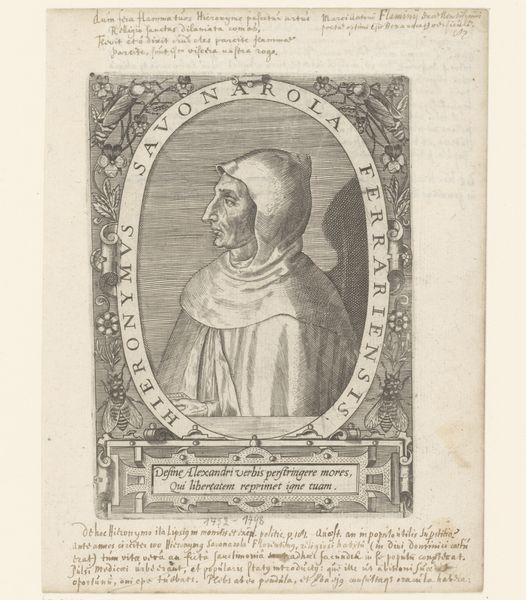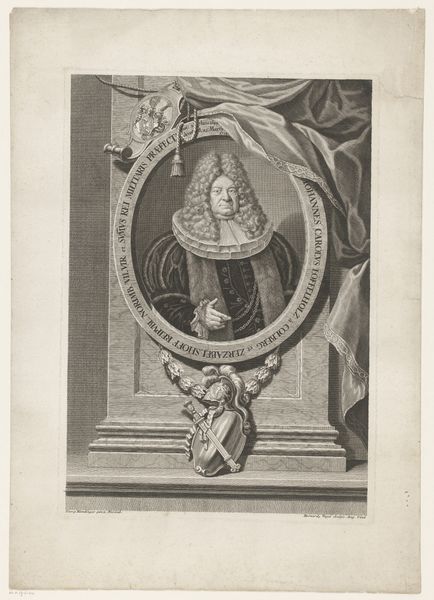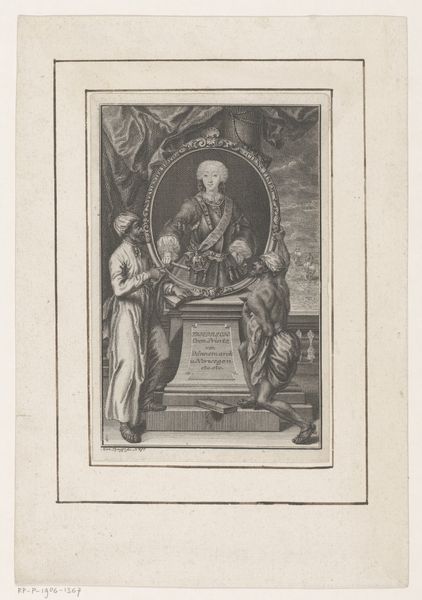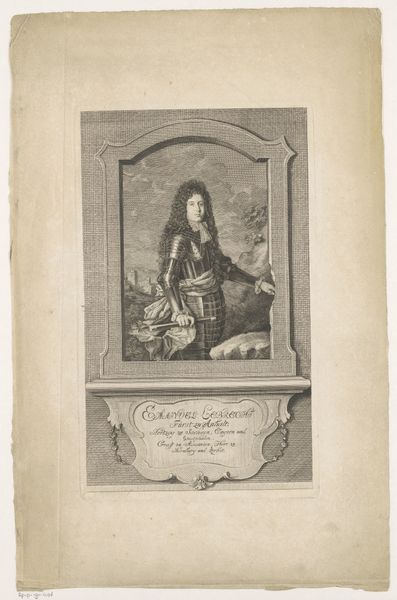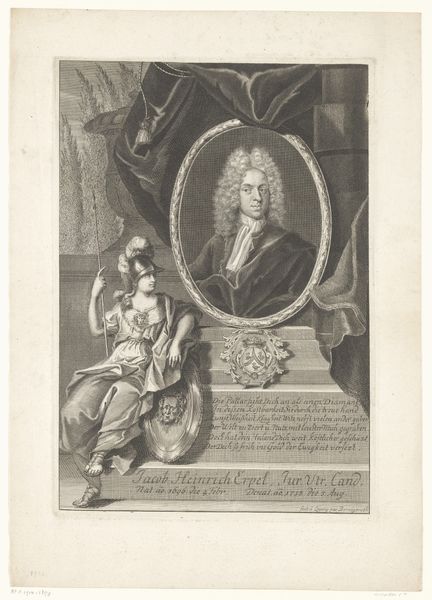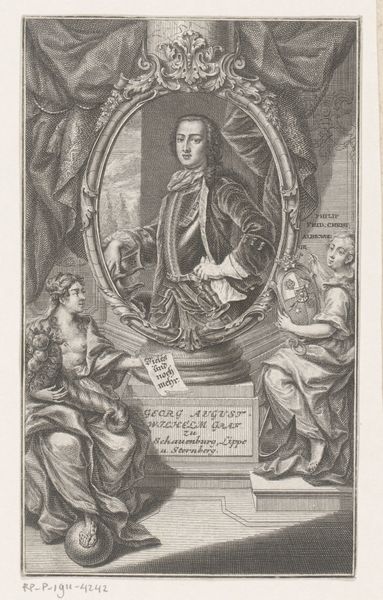
print, paper, engraving
#
portrait
#
baroque
# print
#
paper
#
engraving
Dimensions: height 312 mm, width 202 mm
Copyright: Rijks Museum: Open Domain
Curator: Here we have Martin Bernigeroth’s “Portret van Anna Susanne Falckner,” a Baroque-style engraving from sometime between 1720 and 1733. It's currently part of the Rijksmuseum collection. Editor: My first thought? This feels like an austere commemoration, perhaps a post-mortem portrait? The monochromatic engraving lends a gravity fitting for a memorial. Curator: Precisely. Look at the intricacies of the engraving process. The labor-intensive creation mirrors the social importance attached to commemorating this individual. Bernigeroth clearly understood the power of printed images in cementing a legacy. Editor: I see what you mean. I'm also struck by the contrast. Anna Falckner is framed within an oval portrait above an angel; her image almost feels classical while the angel and surrounding ornamentation embrace a fuller, Baroque aesthetic. Who was this woman? What social standing did she possess to merit such a detailed memorial? Curator: Details like the quality of the paper and the skill evident in the engraving speak to the economic and social status of both the subject and the print’s intended audience. Such commemorative prints were often commissioned by families to circulate among their peers, reinforcing social bonds and lineages. The raw materials, the labor… it all contributes to an understanding of Baroque-era social structures. Editor: That's fascinating. I find myself wondering about the absence of overt symbols of her individuality—perhaps professional or familial attributes? This visual elision implies something larger about the constraints and performance of Baroque femininity—maybe its adherence to established ideals around family, grief, and posterity. Curator: The layering of visual language—from the formal portraiture to the allegorical figures—creates multiple levels of meaning that reinforce social hierarchies. Each choice was deliberate. Editor: Seeing the engraving like this reframes my perspective; instead of solely engaging with it as a somber depiction of loss, I now recognize it as an intricate materialization of early modern social codes. Curator: Absolutely, and seeing it alongside other prints of its era helps one appreciate the broader impact of these commemorative gestures within contemporary material culture.
Comments
No comments
Be the first to comment and join the conversation on the ultimate creative platform.

